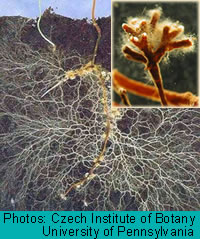Life Cycle In general, fungi begin their lives as a spore, then germinate and develop into a weblike network of filaments called a mycelium. Individual filaments are called hyphae. Throughout this process, the fungus is excreting digestive enzymes and absorbing the resulting nutrients. Because of the hyphal nature of most fungi, they are especially adept at penetrating and assimilating whatever material they are determined to grow on / in. In the case of plant pathogenic fungi, the hyphae are capable of attaching to the surface and burrowing through the outer tissues with special enzymes and great physical force. In addition to secreting digestive enzymes, many fungi also attempt to discourage competition by secreting powerful antibiotics and sometimes poisons. Oyster mushrooms, for instance, will kill nematodes with their secretions and absorb the remains as a nitrogen source. Equally, fungi may try to discourage other fungal species from sharing their turf. If the conflict zones occur amongst wood rotters, it can create spalted wood. |
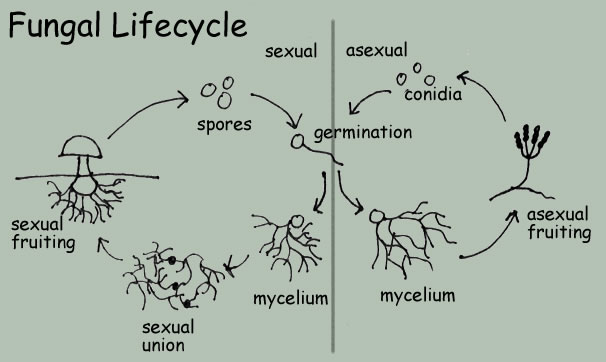 |
By default, many fungi will begin their lifecycle producing microscopic asexual fruiting bodies which bear asexual spores called conidia. These are generated quickly and easily, and help the fungus occupy the area quickly and choke out competitors. Many molds are fungi operating in this fashion. If a fungus encounters another of its own species, and conditions are right, it may mate and begin the process of producing sexual fruiting bodies. The process of determining sexual compatibility, and the method of forming a fruiting body varies depending on the fungus. Most fungi do not have obvious male / female structures, and compatibility is determined genetically. Some fungal species can have over 100 different compatibility traits. The sexual fruiting body is a major investment by the fungus, and often it will only produce these larger structures after a long period of colonization, or when they predict impending unfavorable conditions. This is why autumn is such a good season for finding mushrooms! Sexual fruiting bodies come in great variety, from microscopic mini pockets to garbage lid size shelves, but they all have one thing in common: they are designed to maximize surface area and bear spores with genetic material from both parents. For many fungi, the only way to visually identify the species is to examine their fruiting bodies. There is great variety in the size, shape, color, odor, and taste of these structures; while pretty much all hyphae look the same. |
Major Types of Fungi Like many of the other kingdoms, fungi come in many shapes and sizes, and perform many different roles. Below is a rough breakdown of the major forms fungi can take. Note that this is not a taxonomic breakdown. As you will later discover, a single genus / species may take more than one form. This is called polymorphism and is a major trait of many fungi. |
Molds:
|
Yeasts:
|
Lichens:
|
Macrofungi: As you have probably gathered by now, the fruiting body is a special structure developed specifically to release spores. The vast majority of a fungus' body is spread out as mycelium within whatever materials it is busy digesting. Large fruiting bodies are always the result of sexual pairing, and represent a major investment of nutrients and energy by the fungus. |
Rusts and Smuts: Rusts remain microscopic throughout their lifecycle, and tend to produce spots on leaves and stems from which they release their spores (hence, rust). Unlike all other fungi, rusts will produce up to four different sporulating structures with a different spore type in each phase. In some rusts, the phases alternate between two different host plants. For example, wheat rust requires both wheat and barberry to complete its lifecycle. So, as you can imagine, one way of controlling wheat rust is to remove all barberry from the area! Rusts can be the greatest threat to plants in both natural and agricultural settings. They usually do not kill their hosts outright, but can severely limit the host's ability to photosynthesize and reproduce. Although a rust may be vulnerable in its specificity, it is especially effective in its ability to infect, spread, and survive harsh conditions. Smuts are also very host specific. So much so, that they incorporate themselves into the host tissues and take over locations where the plant invests most of its resources: the seeds / fruit. When ready, the smut will produce plant growth hormone, forcing the plant to invest even more resources into the area, creating nutrient-rich galls which the smut will convert into fruiting bodies. The spores that smuts produce are full of nutrients and are designed to survive through whichever season the host does not grow (usually winter). When ready, the spores then produce asexual fruiting bodies from the stored nutrients, and the asexual spores spread through the air to infect new hosts. A well known smut is corn smut, which is edible and called huitlacoche in Mexico. |
Mycorrhiza: There are two main divisions of mycorrhiza: the Glomerales, which are a microscopic fungi that associate with herbaceous plants; and the ectomycorrhiza, which are a group of many different fungal families which associate with trees and are responsible for producing a wide variety of tasty mushrooms! We will go into more detail about mycorrhiza in the ecology section; the most important thing to know about mycorrhiza is that the vast, vast majority of plants rely on mycorrhizal partners for their success!
|
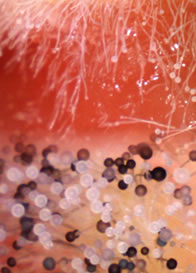
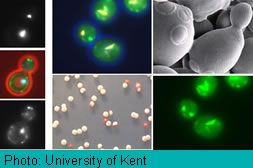 Yeasts are single celled fungi that typically reproduce asexually by budding. Yeasts are not considered a taxonomic group themselves, but rather a form the fungi take. There are many fungi that will produce yeast cells when certain environmental conditions are met. For example: the pathogenic fungus
Yeasts are single celled fungi that typically reproduce asexually by budding. Yeasts are not considered a taxonomic group themselves, but rather a form the fungi take. There are many fungi that will produce yeast cells when certain environmental conditions are met. For example: the pathogenic fungus 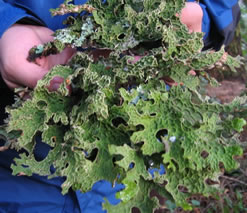
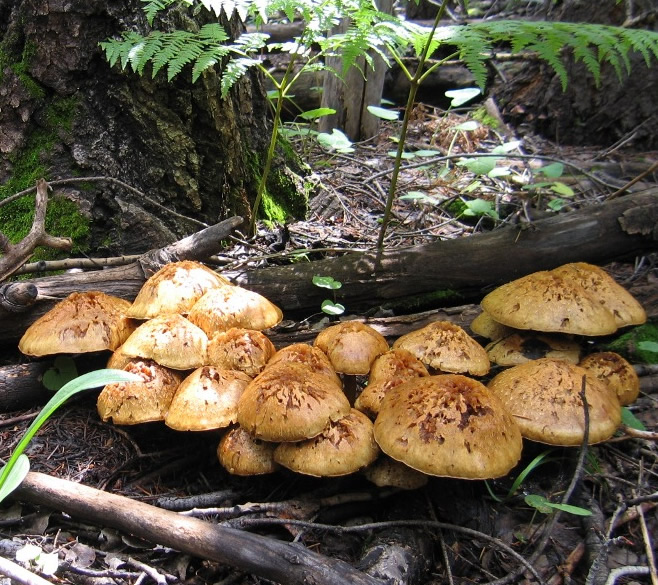
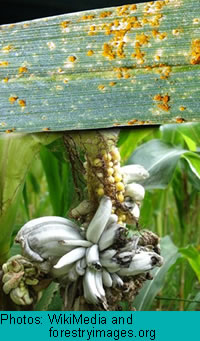 Rusts and smuts are obligate plant parasites / pathogens that have very unique lifecycles and are often adapted to a very specific host range.
Rusts and smuts are obligate plant parasites / pathogens that have very unique lifecycles and are often adapted to a very specific host range. 